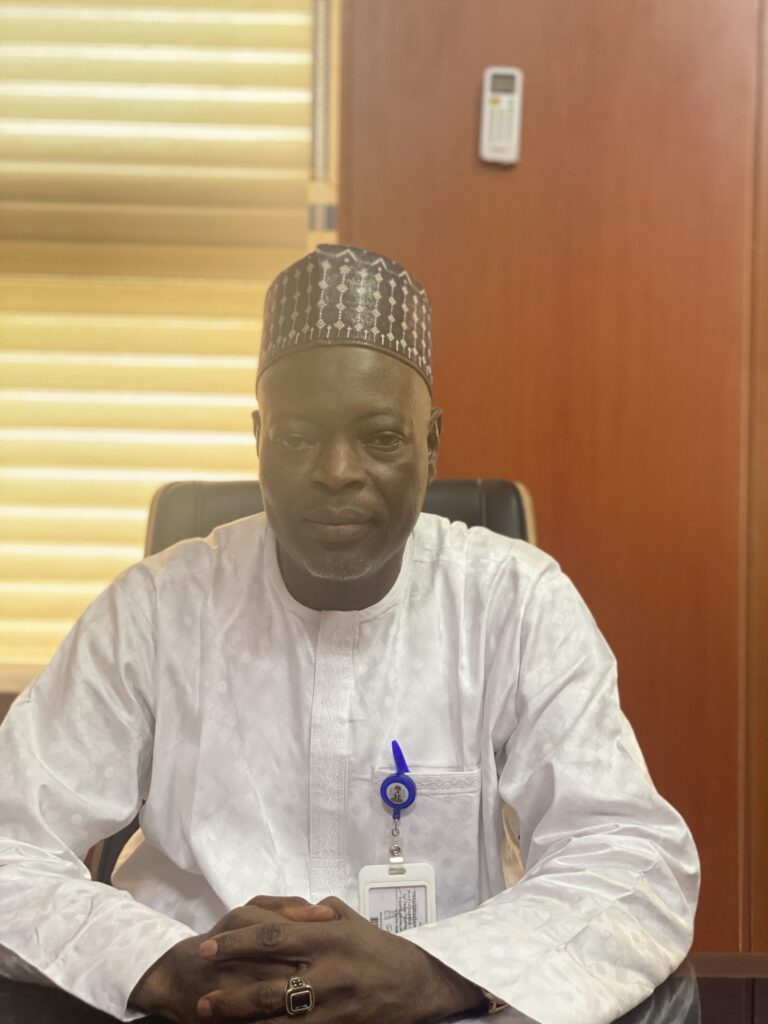Africa’s carbon market gets revamped and revitalized
Thanks to the launch of the Africa Carbon Market Initiative (ACMI) there has been a renewed interest in generating carbon credits for climate finance in Africa. The ACMI was launched at the twenty-seventh United Nations Conference on Climate Change (COP 27) in Sharma Sheik, Egypt. It has as its overall objective to mobilise US$100 billion per annum by 2050, among others. The ACMI’s ambition by 2050 is to “establish carbon credits as one of Africa’s top export commodities via a focus on nature and technology-based removal credits” (p.8)[1].
Carbon markets as an instrument for mobilizing climate finance in developing countries dates back to the Kyoto protocol which established the Clean Development Mechanism (CDM). Ratified in 1997, the Kyoto protocol became operational in 2005[2] and by 2012 the CDM made news headlines as the price of carbon crashed to EUR 0.5 per metric tonne of carbon dioxide equivalent (CO2 eq) from as high as EUR 25 per metric tonne of CO2 eq[3].
Looking at the ACMI’s objectives and Nigeria’s Climate Change Act, it is important that African governments lean on lessons from these past years. More importantly, African governments must ask themselves the question, and aim to solve the issue of: what conditions must exist for there to be strong demand for carbon credits from Africa? We (PUTTRU) argue that without an element of scarcity African countries will remain price takers and not price setters. Also, African countries must look inward – while exporting credits sounds great, a cost-benefit analysis should guide decisions of whether this option or the use of emission savings in improving the country’s emission profile for industrialization should be pursued. In this article we discuss a proposal on the form this could take and what role we plan on playing.
About the article
The article covers the general information on carbon markets using Nigeria as the focal point of the discussion.
The Nigerian government, through the Nigeria Climate Change Act (NAAC), has signaled a desire to establish a carbon market. Thus, this first part is sort of an introduction to the subject of carbon markets and covers the basic elements of the workings of the market (national and international, emission permits versus certified emission reductions – known widely as carbon credits). The second part is more personalized. Here we discuss the alternative to exporting credits and why this is relevant to Nigeria, a country that plans to speed up its rate of industrialization.
A country’s carbon market is the first and foremost on the scale of importance
The most important carbon market is the country’s market, first. This will set the tone as to its level of maturity as perceived by others and if the usual issues of integrity should be of concern. It will also ensure that the local players get the most out of their greenhouse gas (GHG) emission savings in international carbon markets if they choose to participate. Most importantly, the structure and operations of the country’s market will determine if the national goal of sustainable economic development through the instrument of regulating emissions can be actualized. Regulating emissions, if managed well, can support a country’s industrial modernization, technology innovation and adoption, etc.
A national carbon market’s development has three (3) phases: the setup, operationalization and growth. The considerations for each of these include:
- Setup: this starts with the policy, legislation, implementation strategy being defined. Specifics include market rules and procedures covering carbon tax, emission trading rules, list of regulated sectors/subsectors, benchmark data on technologies/equipment regulated, etc.
- Operationalization: markets are driven by supply and demand. For the case of emission permits and carbon credits, the same follows. The higher the level of demand the higher the price you can set for a commodity (permits and/or credits), as long as there is no oversupply. What, then, will drive demand for Africa’s carbon credits in a voluntary international carbon market environment, one may ask? At the basic level this would include addressing issues of integrity and demonstrating additionality as well as insisting on transparency. Another point will be weighing and factoring in the opportunity costs – internalizing the true cost of offsetting carbon to produce credits rather than expanding on permits. This will be discussed in the next part of this article.
- Growth: this simply means, as a result of learning by doing, adding more sectors to the group regulated, revising and tightening your benchmark levels of what is regulated, grow in market sophistication, among other indicators of growth.
What would Nigeria’s carbon market look like?
Carbon markets could be national and international.
The price of carbon credits or tradable emission permits is set by the market through forces of demand and supply.
National carbon market
In a national market, the starting point is the existing policy and regulatory framework, for Nigeria this is the NCCA. The Act establishes the climate change council, a multisectoral and intersectoral committee whose responsibilities is to see that the Act achieves its objectives.
The Act includes provisions for:
- National carbon budget (5-year cycle) and is under the purview of the ministry responsible for National Planning in collaboration with the national climate change council.
- Carbon tax to be set by the Federal Inland Revenue Service (FIRS).
- Emission trading, the market rules and its operations will be led in collaboration with Ministry of Trade.
Taking a cue from what exists in other markets, this is how the Nigeria carbon market will function, when established:
For the first 5-year cycle:
- The council will produce a list of activities (sectors, sub-sectors) to be regulated during the 5-year period.
- A national emission allowance plan will set the threshold for how much emissions can be emitted during the 5- year period – taking into consideration what is regulated and what is not regulated and the associated emissions. The entities to be regulated under the 5-year period will have to apply for permits to emit. The total permits granted by the competent authority should not exceed the total allowance for the 5-year period in question. Permits are granted on an annual basis and so is the requirement for monitoring, reporting and verification.
- Regulated entities granted allowances to emit:
- Are subject to penalties for excess emissions, i.e., payment of carbon tax for excess emission (e.g., X naira per tonne of CO2 eq emitted in excess of the allowance given),
- May participate in trading permits – e.g., if the company is able to reduce emissions below what it is permitted to emit, it may sell its extra allowances to a company that is not able to keep its emission level to what it is allowed to emit.
- If there is an oversupply of tradable permits (or low demand for it) in the market, then price falls. This could mean that the emission allowance is too generous and/or that companies are very efficient in cutting down their emissions – if this is the case, then it is a good signal for the competent authority to tighten the allowance to emit. However, this could also happen if companies are able to offset their emissions from outside their country’s market using instruments like the CDM. If not careful, this could be detrimental to the national market’s effort to be cleaner but positive for the global planet’s emission profile, since, ideally, tangible emissions should be reduced through this method, globally.
- The Kyoto protocol’s establishment of the CDM made it possible for regulated entities in developing countries to offset their emissions by getting credits from developing countries. The mechanics of this is that companies implement emission saving projects in developing countries (e.g., tree planting), the emissions saved in the third-party country counts towards the regulated entity’s emissions reduction in their host country. The company may buy these credits as well. Referred to as certified emissions reductions (CERs), these credits are tradable on exchanges and, of course, are affected by the forces of demand and supply, which sets the price.
- Like the local market for emission trading schemes, if there is an oversupply of carbon credit (or low demand for it) in the international market, then price falls. In 2012 CDM crashed, falling to EUR 0.5, due to no demand for carbon credits under the CDM from the EU and Japan who were the main buyers of CERs[4].
International carbon market
The ACMI, as discussed above, is a voluntary international carbon market structure.
The voluntary international carbon market has helped reinject life and optimism in the structure introduced through CDM. Through this framework individuals and companies in advanced economies can purchase CERs/ carbon credits towards their own emission reduction goals, including corporate social responsibility (CSR) efforts.
As every market, the forces of demand and supply sets the price – with the buyer seating in the driver seat, for obvious reasons. Considering the experience with the price of carbon under the CDM crashing in 2012, the voluntary market can be considered a very good deal – for now.
Managing the forces of demand and supply
See Part 2 of this article.
[1] See Africa Carbon Markets Initiative (ACMI): Roadmap Report, Harnessing carbon markets for Africa. Available here.
[2] To learn more about the protocol read: What is the Kyoto Protocol about? Available on the UNFCCC’s website here: https://unfccc.int/kyoto_protocol
[3] The Centre for Economic Policy Research (CEPR) published an article on Collapse of the Clean Development Mechanism scheme under the Kyoto Protocol and its spill over: Consequences of ‘carbon panic’ on 16 March 2022. The article can be assessed on their website here.
[4]. See note 3.







